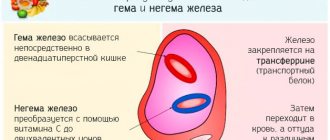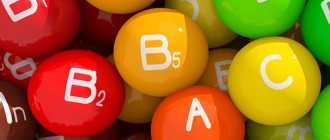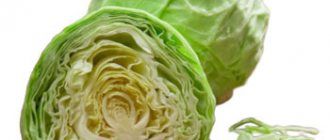Chlorine is essential for maintaining health; without it, many biochemical processes would be impossible. However, this substance can bring not only benefits, but also harm. After all, as a gas it is poisonous, and its excessive presence in water or food can cause poisoning.
Properties of chlorine
Chlorine is a reactive non-metal belonging to the halogen group. Included in the periodic table under atomic number 17. Under normal conditions, it is a gas with a suffocating odor and a yellow-green tint. It is poisonous, 3 times heavier than air.
The properties of chlorine are that due to its high chemical activity, it reacts with almost all elements in the table. Therefore, the substance is practically never found in its pure form. In nature, it can only be found in the composition of minerals: sylvite, bischofite, halite, sylvite, carnalitte, etc. When exposed to alkalis and water, it reacts by transitioning to hypochlorous and hydrochloric acid.
In 1772, the substance was first obtained by Joseph Priestley as a result of an experiment. However, not in its pure form, but as a compound with hydrogen. And after 2 years the substance was obtained in its pure form. To conduct the experiment, Swedish chemist Karl Wilhelm Scheele used manganese dioxide and hydrogen chloride.
However, due to its pronounced odor, the substance was long classified as one of the forms of hydrochloric acid. The chemist G. Davy in 1811 managed to prove the fallacy of this judgment. During the experiment, he managed to decompose table salt into two components: sodium and chlorine. He also proposed a name for the new substance - chlorin. It is translated from Greek as “green,” which alludes to the natural color of the gas. And a year later, J. Gay-Lussac reduced it to “chlorine”.
Which surfaces should be disinfected?
The otolaryngologist warns that there is no need to wipe everything with bleach or antiseptics. “Of course, we must not lose reason. In a panic, some rushed to clean all surfaces. Tinder, for example, is on window sills, where there is no contact with coronavirus infection. And we need to wipe down what we touch more often: the handles of the front door, interior doors, windows, and faucets,” says the doctor.
Earlier, Rospotrebnadzor gave citizens advice on disinfecting their homes. Experts recommend washing door handles daily with soap or treating them with an alcohol-based antiseptic of at least 70% or a chlorine-containing solution. If there is a sick person in the house, after each use you need to wipe the switches with an antiseptic wipe, wash them with household chemicals or treat faucets, toiletries, sinks and kitchen countertops with alcohol solutions. If no one is sick at home, it is enough to disinfect them once a day.
When cleaning the house, it is recommended to wash with soap or wipe with an antiseptic napkin handles of cabinets, non-upholstered backs of chairs, tables, open shelves, lids of chests of drawers and bedside tables. The control panel of household appliances should also be treated with an antiseptic. It is recommended to clean the toilet and bathroom last, using chlorine-based disinfectants.
The role of chlorine in the human body
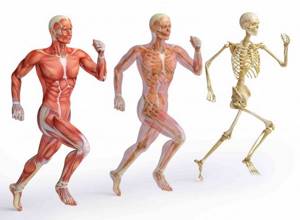
The human body contains up to 100 mg of chlorine. Moreover, the main part is located in the epithelium, muscle tissue and blood. The remaining 40% is distributed between internal organs, bone tissue, and extracellular fluid.
When chloride enters the human body with food and water, it undergoes dissociation. And the substance, divided into ions, participates in many metabolic processes. For example, its presence allows carbon dioxide to be removed from the body. Since chloride is one of the participants in the process of its release.
This substance delivers fluid and nutrients inside the cell. With the help of chlorine, some ions cross the cell membrane. It affects muscle tissue as it is an electrolyte. Due to constant physical activity, the body loses chloride, which can cause cramps.
Chlorine, combining with potassium and sodium, provides the necessary pressure in the blood, lymph and intracellular fluid. Controls the process of redistribution of fluid and salts in tissues. Provides regulation of osmotic pressure.
The macronutrient starts the process of digestion of complex carbohydrates by activating amylase. Another digestive enzyme, pepsin, is involved in the breakdown of protein. Its activation is also due to chlorine, since the process occurs only under the influence of hydrochloric acid. And it is produced only in the presence of a macroelement.
Chlorine is one of the components that regulate the acid-base balance. Its displacement can provoke the appearance of various diseases. Since biochemical processes are disrupted, internal organs stop working in the desired mode.
The macroelement allows the circulatory system to function correctly and supervises the condition and functioning of red blood cells. Chlorine is also involved in the breakdown of fats, preventing them from accumulating inside the liver and other tissues. It has a pronounced bactericidal property, so if there are problems with the gastrointestinal tract, an increase in the daily norm is prescribed.
Foods rich in chlorine
A person gets up to 90% of his daily requirement from ordinary table salt. However, prolonged abstinence from food or dieting causes a deficiency of the macronutrient. For those who are opposed to salt, you can replace it with seaweed. Another option for replenishing the required amount of macronutrients is spirulina.
Another available source is tap water, as it is purified with a nutrient. However, its use is undesirable, as it can oversaturate the body with the substance. Boiling used to be considered a simple solution to rid tap water of chlorine.
After all, the gas, according to scientists, evaporated after heat treatment. However, recent studies have made major adjustments to this issue. It turned out that boiling allows you to dilute the water from active chlorine. However, its residues form reactions with organic compounds, which leads to the appearance of toxic substances.
Therefore, you should not rely entirely on heating; it will not be able to completely purify the water. The best solution would be to install a multi-stage filtration system. And to replenish the daily requirement it is worth using food.
For vegetarians, plant foods will help maintain the required level of chlorine in the blood. First, you should turn to cereal crops - rye, oats and rice. Among grains and legumes, buckwheat and young peas contain a large amount of chlorine. If you consume these products in the form of sprouts, they will saturate the body with a number of nutrients.
Secondly, vegetables and fruits also contain macronutrients. Large amounts of the substance can be found in pears, tomatoes, beets, celery, cabbage, potatoes, apples, and carrots. If there are no restrictions on the consumption of animal products, then chicken eggs will also help saturate the body with macronutrients.
Thirdly, meat and fish are a valuable source of not only protein, but also chlorine.
The leaders in the amount of chlorine are offal and seafood:
- beef tongue;
- oysters;
- pork heart and kidneys;
- bream caviar (roach or carp);
- beef liver;
- lobsters;
- pig liver.
Marine fish varieties are also rich in chlorine. Most of it is found in sterlet, mackerel, beluga, yellowfin, crucian carp, sturgeon, and anchovies. And the largest amount of chlorine is found in fish and meat that has been salted or dried.
Lactovegetarians should enrich their diet with dairy products. A high content of the substance can be found in fatty homemade cottage cheese, hard cheese, and fresh milk. Butter also contains chlorine, but due to its fat content, the product should not be consumed too much.
Finished factory products often contain chlorine; it is used in the form of food additive E 925. In many countries around the world it is banned, as it has been recognized as hazardous to health. However, it is still often used to bleach flour. Therefore, you should avoid bread and bakery products made from wheat. It is better to replace them with analogues made from rye or buckwheat flour.
The benefits of chlorine
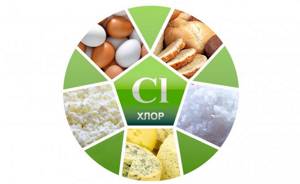
The benefits of chlorine are as follows:
- prevents dehydration;
- eliminates swelling;
- rids the body of waste and toxins;
- affects joint flexibility;
- awakens appetite;
- allows the body to absorb food;
- normalizes blood pressure;
- improves the functioning of the liver and cardiovascular system.
Chlorine - to help those suffering from stomach disease
In case of increased acidity of the stomach, which is manifested by heartburn, more chloride is required, since its costs increase. Accordingly, people with gastrointestinal diseases need a larger amount of macronutrients, as the need for it increases.
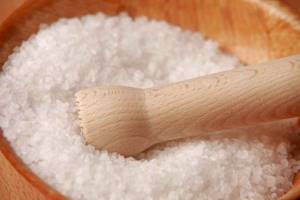
Salt contains chlorine
Chlorine will prevent dehydration and remove toxins
This element also has a valuable quality - it helps the body retain water in its tissues, in other words, counteract its dehydration.
Chlorine has the ability to remove poisons from the body, helps the blood stay healthy, ensuring the good condition of red blood cells.
Harm of chlorine
However, exceeding the permissible norm of chlorine can cause harm and cause the development of a number of diseases.
Moreover, the pathologies caused are usually of a severe type, difficult to treat:
- pneumonia;
- liver and kidney cancer;
- asthma;
- lungs' cancer.
If the gas enters the atmosphere or water in excess, it can cause an increase in the level of acidity in the stomach. And this already leads to the development of ulcers, gastritis and other gastrointestinal diseases. Oversaturation of the air with vapors of the substance can cause a burn to the lungs, since when it gets inside the body it is transformed into hydrochloric acid.
What foods does it contain?
Chlorine as a macroelement is found in table salt. In addition to all this, the substance contains in large quantities:
- legumes;
- chicken eggs;
- mushrooms, especially porcini mushrooms;
- White cabbage;
- seaweed;
- olives;
- celery;
- tomatoes;
- leaf and head lettuces;
- beets and carrots;
- seafood and sea fish;
- offal: pork kidneys, cow's udder, beef liver.
A certain amount of chlorine is contained in milk, and this element will be more accessible to the body in fermented milk products and cottage cheese. The substance is also present in butter or cheese.
Cereals (oats, rye and barley) and potatoes, as well as fruits such as apples, pears and quince, contain very small amounts of chlorine.
Lack of chlorine
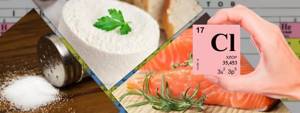
Hypochloremia is an insufficient level of chlorine in the blood. This condition is rare, as it usually occurs in excess. After all, chloride is part of table salt. And it is present in almost all products and prepared dishes.
However, the following factors can cause hypochloremia:
- prolonged fasting;
- hyperhidrosis;
- Cushing's syndrome;
- use of laxatives and diuretics;
- salt-free diet;
- kidney diseases;
- food poisoning causing vomiting and diarrhea;
- burns affecting a large area of skin;
- heart failure that has progressed to the chronic stage;
- artificial feeding;
- Addison's disease;
- stomach ulcer;
- skull injury affecting the hypothalamus.
A lack of chlorine is indicated by:
- convulsions;
- hair loss;
- crumbling teeth;
- drowsiness;
- swelling;
- lack of appetite;
- increased body temperature;
- exhaustion;
- depression;
- varicose veins;
- lack of coordination;
- dry skin;
- nausea;
- decrease in blood pressure.
Microelement chlorine
Chlorine was isolated as an element of chemistry in the eighteenth century, but its most famous chemical compound, table salt, was used by people back in ancient times.
About 6,000 years ago, salt was mined in the Mediterranean countries, and it was widely used in everyday life - having learned, first of all, to preserve food with it - fish, meat, vegetables.
The use of rock salt was described by Herodotus; Previously, alchemists, conducting their own experiments, also obtained chlorine, although they did not know about its properties; in the nineteenth century, English and French chemists finally figured out what kind of substance was released when the mineral pyrolusite was heated with hydrochloric acid, and gave it the name chlorine, for its yellow-greenish color.
Later, for the sake of brevity, such an element was called chlorine, and it was also found that it is also present in this organism - mostly in an ionized state. Most of the chlorine - from 30 to 60% - is contained in our skin, since it has the ability to collect such an element, but it is also found in other tissues: it is part of the stomach juice, blood, bones, cerebrospinal and intercellular fluid, and thanks to this participates in the process of water-salt metabolism - it helps the body retain water in its tissues.
Today, scientists have become convinced that chlorine is also an irreplaceable element that is regularly present in plant and animal tissues, and interacts in the body with other substances, simultaneously maintaining normal many physical and chemical processes - for example, acid-base balance and osmotic pressure.
Excess chlorine in the body
Hyperchloremia is an oversaturation of the body with chlorine. The condition is most dangerous for patients diagnosed with epilepsy or with other central nervous system diseases. As a rule, excess chlorine in the body is diagnosed in workers in the chemical, textile, pulp and paper, and pharmaceutical industries.
However, hyperchloremia can develop for other reasons. For example, swimming in water enriched with chlorine, or taking a hot shower. After all, large concentrations of the substance penetrate through the mucous membranes and skin. Frequent consumption of foods containing salt can also cause a pathological condition. Do not use water treated with chlorine for drinking or other household needs.
Factors leading to the development of hyperchloremia:
- renal failure;
- diabetes;
- inflammation affecting the intestinal mucosa;
- chemotherapy;
- ulcers of the stomach and duodenum;
- hormonal imbalance;
- long-term use of diuretics, corticosteroids, hydrocortisone.
The following symptoms will indicate excess chlorine:
- heartburn;
- sore throat;
- severe dry cough;
- swelling;
- gastrointestinal disorder;
- chest pain;
- pain in the eyes;
- headache;
- flatulence.
Excess
An excess of chlorine can be caused by excessive salt in food, drinking tap water, and even frequent showering and bathing, when increased doses enter the body through inhalation of vapors and through the skin. The procedure leads to up to 20 times more toxins entering the bloodstream with water.
Symptoms of acute poisoning occur upon intake of 15 grams.
Signs of excess chlorine in the human body:
- dry cough;
- headaches;
- painful sensations in the chest;
- dry mouth;
- heartburn;
- lacrimation;
- irritating effect on the mucous membrane of the throat;
- diarrhea;
- frequent colds accompanied by high fever;
- pain in the eyes;
- nausea;
- flatulence;
- pulmonary edema.
Water disinfected with chlorine has carcinogenic properties and contributes to the occurrence of acute respiratory viral infections, gastritis, pneumonia, kidney and liver cancer, and the appearance of gene mutations. Excess chlorine kills intestinal flora, so it is recommended to more often consume fermented milk products rich in bifidobacteria.
To purify water in order to prevent high doses of chlorine from entering the body, it is recommended to add activated carbon to the water for 20 minutes or boil and let the liquid sit for 24 hours, but in this case, mineral salts will be lost from the composition.
Inhalation of concentrated vapors is dangerous, causing chemical burns and respiratory arrest. Workers in the pharmaceutical, chemical, and pulp and paper industries are at risk.
Amid the coronavirus pandemic, requirements for home hygiene have increased. Experts recommend wet cleaning twice a day, washing groceries after shopping, and disinfecting surfaces that residents touch most often. Many people have started using the good old bleach to clean floors and surfaces. However, frequent use of a concentrated solution of bleach can be harmful to health.
“Chlorine is a very harsh and poisonous compound. Of course, it depends on us what concentration we make, but it is clear that it is pointless to treat something with a weak solution,” otolaryngologist Vladimir Zaitsev tells AiF.ru.
Daily chlorine rate
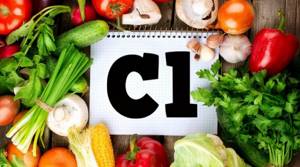
The recommended volume varies depending on age and area of activity. The maximum daily chlorine intake for an adult is considered to be 2300 mg, but if necessary it can be increased. Large doses will be required for athletes and people engaged in physical labor.
Those living or working in conditions of high temperature and humidity should also adjust their diet upward. For gastrointestinal diseases, the daily norm should be above 2300 mg. It is necessary to ensure that the indicator does not fall below 800 mg. This amount allows you to maintain ionic balance.
The following standards have been established for children and adolescents:
- infants:
up to three months - 300 mg, by one year the figure must be increased to 600 mg; - children:
up to 2 years of age should receive 800 mg, by 7 years of age the volume should be increased to 1100 mg; - schoolchildren:
should receive from food no less than 1600 and no more than 1900 mg.
Lack of chlorine
Lack of chlorine
has only been studied in clinical trials on laboratory animals.
The main causes of chlorine deficiency
in humans there is a small amount of intake from food and disturbances in chlorine metabolism. Chlorine deficiency occurs in bottle-fed children.
Symptoms of chlorine deficiency:
- anorexia;
- constipation;
- loss of teeth and hair;
- edema syndrome;
- increased blood pressure;
- alkalosis (one of the types of disorders).

